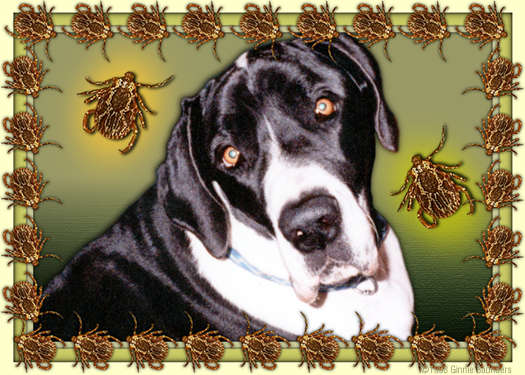
|
Last week we had an unpleasant surprise. Jabber was diagnosed with Rocky Mountain Spotted Fever, a relatively rare but deadly disease. The common vector is the American dog tick, Dermacentor Variabilis, pictured above (along with Jabber.) RMSF is caused by an organism named Rickettsia rickettsii and it is characterized by severe vascular damage. Untreated, it can result in death; in fact RMSF is the most common fatal tick-born disease in the US. Both humans and canines are susceptible. RMSF in humans has been reported in almost every state, but the majority of cases occur in the southeastern United States. The usual treatment is Doxycycline. Without antibiotics, the mortality rate is about 30%. With timely antibiotic treatment, mortality drops to just 4%. Death is usually attributed to delayed diagnosis. Tick bites are painless. If you live in an area where ticks are prevalent, you should check your dog (and yourself) daily for ticks. An infected tick must feed on its host for several hours before infection can occur. This permits a reasonable time window to avoid the disease, even if you've been bitten. If you contract Rocky Mountain Spotted Fever, symptoms will begin to appear about a week after the tick bites you. The illness can last 2-3 weeks. The common symptoms of RMSF are the same for humans and dogs:
If you would like to learn more about tick diseases, visit Great Dane Links for a listing of 20 tick-related websites. Great Dane Links is a helpful resource. It offers over 500 links, sorted by category for easy browsing. Categories include health & welfare, breeding & genetics, clubs & organizations, rescue resources, breeder directory, private show dog/personal pet sites, and more.
If you experience a problem, please visit the hypertext-based Archives & Directory. 
DaDane Postcards! Recently updated! There are 75 cards now, including the most recent DaDane pictures. Send someone a DaDane postcard. It's virtually free!
|

